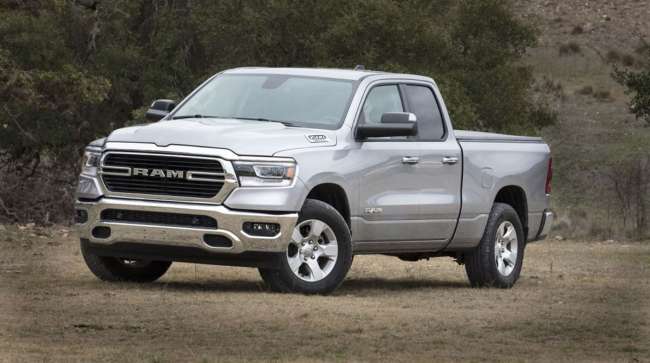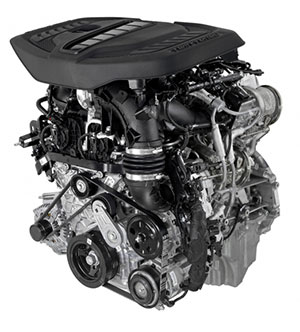The Detroit News
Stellantis Announces Hurricane ICE Line

[Stay on top of transportation news: Get TTNews in your inbox.]
In a nod to the uncertain road ahead for electric vehicle adoption, Stellantis announced an all-new internal-combustion engine line March 25, even as the automaker targets 50% EV sales in the U.S. by 2030.
Called Hurricane, the high-performance, 3.0-liter, twin-turbo, inline-6 cylinder will replace V-8 powerplants for the company’s rear-wheel-drive-based platforms on which the profitable Ram pickup, Jeep SUVs and Dodge sedan lines are based.
Governments are pushing automakers toward battery-powered drivetrains, but consumer adoption has struggled at 3% market share due to issues with range, charging infrastructure and affordability. The Hurricane drivetrain ensures Stellantis will be able to meet stricter EPA emissions rules beginning in 2026 while testing the market with new EVs and satisfying customer demand for high-horsepower truck and car gas engines.

Standard output engine by Stellantis.
“Internal combustion engines still matter,” said Stellantis propulsion system chief Micky Bly in introducing the Hurricane. “There are not a lot of people talking about new ICE engines these days, but we have a need.”
That need focuses on the automaker’s crown jewels: Ram and Jeep as well as its Dodge performance brand. Their signature models are RWD truck and truck-based SUV applications (Ram pickup, Jeep Grand Wagoneer, Jeep Grand Wagoneer) and large unibody SUVs and sedans (Jeep Grand Cherokee, Dodge Challenger, Dodge Charger, Dodge Durango). They boast high-performance V-8 engines with popular trims like TRX, SRT and Scat Pack — as well as standard models powered by the workhorse, normally aspirated Pentastar V-6.
The V-8s, however, are in the crosshairs of EPA carbon-dioxide rules that are due to ramp up in 2026 and punish gas guzzlers.
Hurricane, the new, 3.0-liter twin-turbo inline six-cylinder engine, will deliver better fuel economy and fewer emissions while generating more horsepower and torque than many competitors’ naturally aspirated V-8 and boosted six-cylinder power plants: https://t.co/gLe7tse0G1 pic.twitter.com/58OXZzg2Yx — Stellantis North America (@StellantisNA) March 25, 2022
Hurricane is an old family name dating to 1950s Willys inline-4 cylinder performance engines found in Jeepsters and stations wagons. The new, forced-induction, aluminum-block engine follows in those footsteps with inherently smooth, inline-6 architecture that, Bly said, will produce class-leading performance. A Standard Output version is capable of more than 400 horsepower and 450 pound-feet of torque, while a High Output six is optimized for performance and will be capable of more than 500 horsepower and 475 pound-feet of torque.
Those are performance numbers to rival a twin-turbo BMW M3 inline-6. The SO and HO feature class-leading 133 and 166 horsepower per liter, respectively, while reducing CO2 emissions by about 15%.
“Internal combustion engines will play a key role in our portfolio for years to come,” said Bly. “Hurricane is a no-compromise engine that delivers an important reduction in greenhouse gases without asking our customers to give up performance.”
Want more news? Listen to today's daily briefing above or go here for more info
The Hurricane promises more grunt than the 5.7-liter and 6.4-liter V-8s it will replace, but it will not use the signature “Hemi” cylinder construction that has been synonymous with Jeep-Ram-Dodge performance marketing.
Instead, Plasma Transfer Wire Arc — popularly known as “spray bore” — cylinder technology is the new buzzword for the I-6’s impressive numbers. The technology was pioneered by Ford in high-output Mustang GT350 and GT500 V-8 engines.
The Stellantis strategy echoes that of Ford’s 2.7-liter/3.0-liter, twin-turbo Ecoboost V-6 engines that debuted in 2015, as well as Toyota, which just replaced the Tundra pickup’s V-8 with a twin-turbo V-6. Ford’s twin-turbos now anchor the F-150 pickup lineup — replacing V8s while providing more power and efficiency.
Distributed by Tribune Content Agency, LLC




